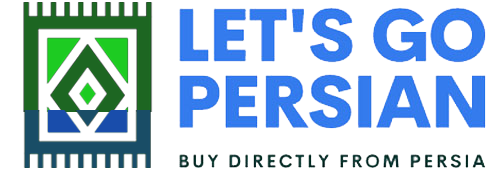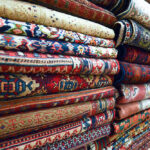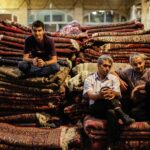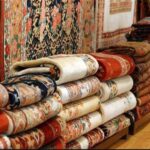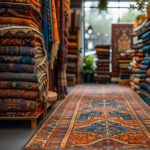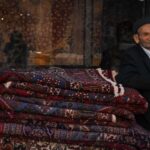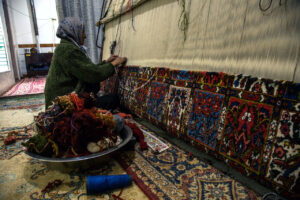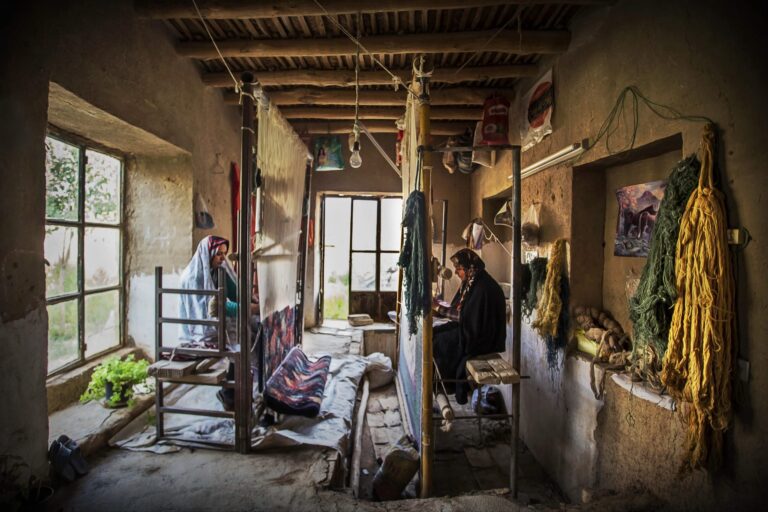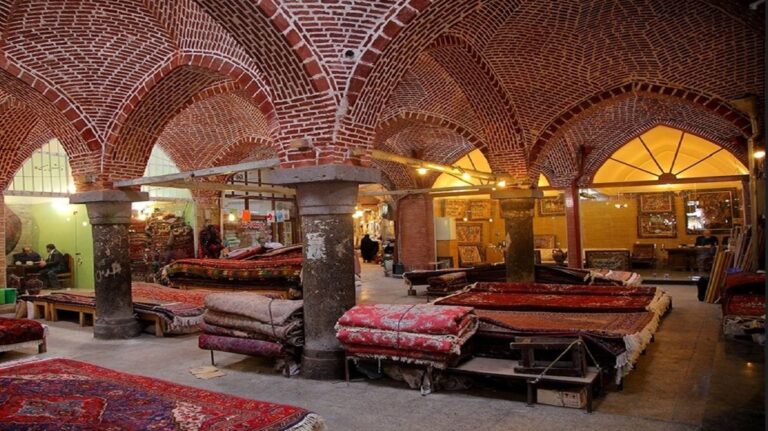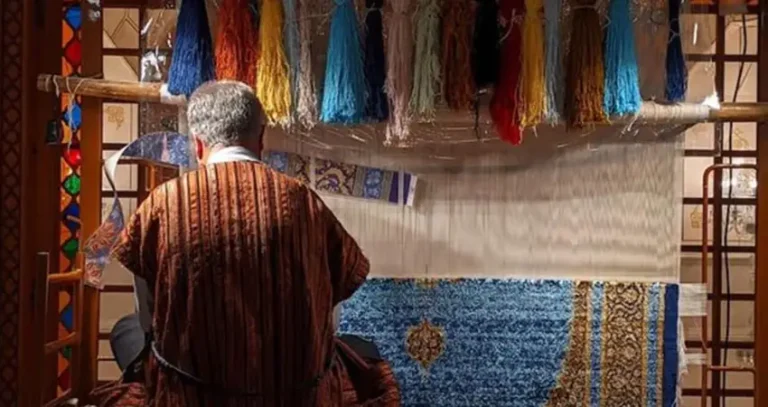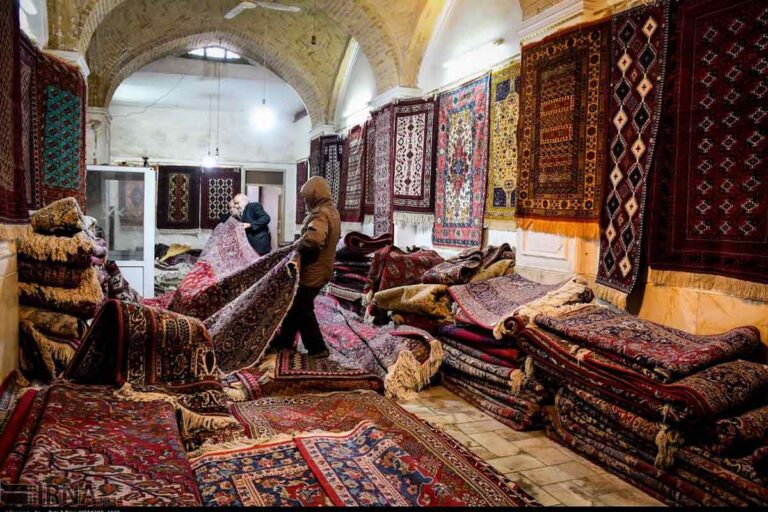Material Variations of Persian Carpets
Modern Interpretations vs. Traditional Styles in Persian Carpet
Persian rugs are celebrated not only for their exquisite craftsmanship but also for the rich symbolism woven into every design. Across Iran, common motifs—floral patterns, geometric arrangements, and medallions—carry layers of cultural, spiritual, and historical meaning. In this expanded post, we delve into the narratives behind these motifs, comparing their interpretations across a broad spectrum of rug centers, from Tabriz and Kashan to lesser-known hubs like Hamadan, Gorgan, and Sari, alongside renowned centers such as Nain, Qom, Isfahan, Kerman, Ardabil, Qazvin, Shiraz, Yazd, Sanandaj, Bijar, Mashhad, and Zanjan.
Floral Motifs: Nature’s Elegance Across Regions
Floral designs are ubiquitous in Persian rugs, symbolizing growth, renewal, and the beauty of nature. However, each region expresses these themes in its own distinct style:
-
Kashan:
With a focus on delicacy, Kashan rugs mirror the elegance of its famed gardens. Their intricate floral patterns evoke grace, transience, and the refined aesthetics nurtured under imperial patronage and Sufi influence. -
Isfahan:
Here, floral elements are rendered in lavish detail. Rich layers of petals and intertwined vines celebrate abundance and opulence, reflecting the city’s imperial grandeur and cultural synthesis. -
Sanandaj:
Sanandaj rugs boast bold, expressive floral motifs that celebrate vibrant Kurdish folklore. These designs are dynamic, full of life, and imbued with local storytelling. -
Hamadan:
In Hamadan, floral motifs are often robust and earthy, echoing the rustic landscapes and folk traditions of the region. The patterns tend to be less ornate but deeply connected to local, natural imagery. -
Gorgan:
Hailing from the lush northern regions near the Caspian Sea, Gorgan rugs often feature softer, more organic floral designs. These motifs capture the region’s verdant landscapes and the interplay between nature and traditional craftsmanship. -
Sari:
Sari rugs present a unique blend where floral motifs are interlaced with subtle geometric accents, reflecting both the agricultural bounty of the area and a refined artistic approach.
Geometric Patterns: Order, Infinity, and Spiritual Harmony
Geometric designs are a defining element of Persian rugs, symbolizing balance, cosmic order, and the infinite nature of the universe. Different regions offer their own interpretations:
-
Tabriz:
Renowned for its symmetrical precision, Tabriz employs repeating geometric forms that combine ancient Persian sensibilities with influences from Central Asia, creating a harmonious and structured visual language. -
Qom:
In Qom, geometric patterns take on a meditative quality. Intricate, carefully repeated shapes and interlacing lines evoke the principles of Islamic calligraphy and sacred geometry, inviting contemplation and spiritual reflection. -
Nain:
Nain rugs are known for their minimalist geometric arrangements, where simplicity and precision go hand in hand. The understated patterns emphasize balance and quiet elegance, often using a restrained color palette to highlight their subtle beauty. -
Zanjan:
Zanjan’s geometric designs blend historical influences with evolving artistic trends. The clean, defined patterns reflect both a respect for tradition and a modern sensitivity to form and proportion.
Medallions: The Heartbeat of Design
Medallions serve as focal points in many Persian rugs, acting as visual centers that draw the eye and encapsulate broader narratives:
-
Isfahan:
In Isfahan, medallions are grand and intricately detailed, echoing the city’s imperial history. They stand as symbols of power and cultural opulence, often surrounded by elaborate borders and supplementary motifs. -
Kerman:
Kerman rugs feature medallions with an exotic flair—used sparingly to accentuate complex pictorial scenes or floral compositions. These central elements highlight the region’s openness to cross-cultural influences, brought in through historical trade. -
Qazvin:
Qazvin medallions exude regal sophistication. Their elaborate design and balanced composition reflect the city’s royal past and the meticulous craftsmanship that has been passed down through generations. -
Bijar:
In Bijar, medallions are integrated into more robust, earthy designs. While less ornate, they resonate with the rugged, rural spirit of the region and serve as key elements in the narrative of durability and folk artistry.
Additional Regional Influences and Emerging Voices
Beyond the core centers, several other regions contribute distinct motifs and symbolism to the Persian rug tradition:
-
Shiraz:
Embracing a poetic sensibility, Shiraz rugs blend bold floral and geometric elements. Their medallions and borders, rendered in vigorous strokes, capture the dramatic flair of Persian literature and artistic expression. -
Yazd:
Reflecting its desert surroundings, Yazd rugs often employ sparse geometric patterns with subtle floral accents. These designs echo the stark beauty of arid landscapes, where simplicity and resilience are celebrated. -
Ardabil:
Ardabil rugs preserve age-old motifs that have been handed down through centuries. The floral and geometric patterns in these rugs evoke a deep sense of history, continuity, and the timeless nature of traditional Persian art. -
Mashhad:
In Mashhad, the integration of calligraphic elements with traditional motifs creates a layered narrative that is both spiritual and cultural. The medallions and borders here often incorporate symbolic inscriptions, adding another dimension to the rug’s meaning. -
Semnan:
Semnan rugs, though less widely known, offer a unique blend of minimalist geometric patterns with delicate floral details. Their designs strike a balance between modern simplicity and traditional symbolism, reflecting the region’s evolving artistic sensibilities.
Weaving Symbolism into Every Knot
The regional variations in motifs—whether floral, geometric, or medallion-centered—are not just decorative choices; they are deliberate expressions of identity, belief, and history. Each design element carries with it stories of nature’s beauty, the cosmos’s infinite order, and the rich tapestry of human experience. From the lush gardens of Kashan to the meditative geometries of Qom, and from the bold folk expressions of Sanandaj to the understated elegance of Nain, Persian rugs encapsulate a dialogue that spans millennia and geographies.
By comparing these motifs and their meanings across a wide range of Persian rug centers, we gain a deeper appreciation of how these textiles serve as both artistic masterpieces and historical documents. Every knot, every pattern, is a testament to the enduring creativity and cultural richness of Iran—a legacy woven into the fabric of time.
Embrace the intricate symbolism of Persian rugs, and discover how each motif—be it floral, geometric, or medallion—tells a story as diverse and vibrant as the regions from which they originate.
